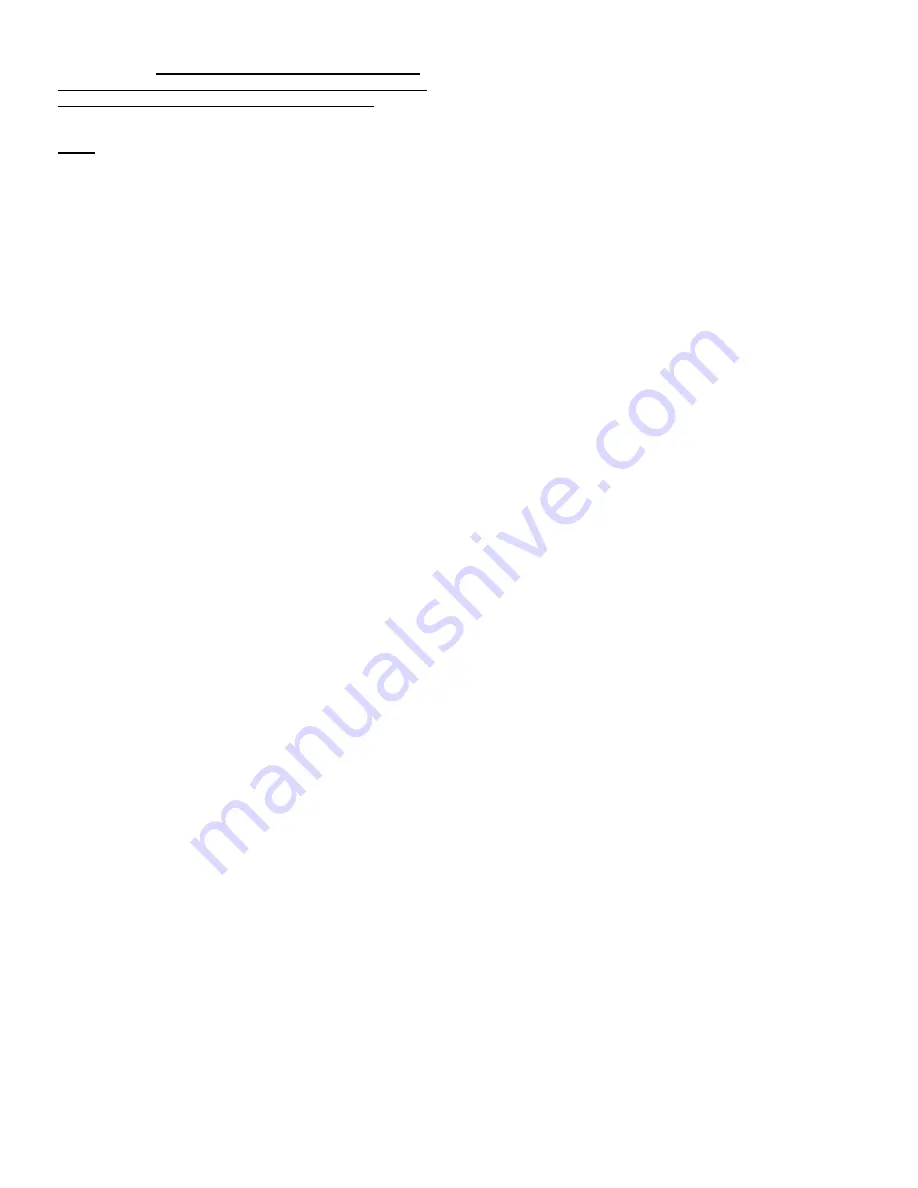
Page 2
IMPORTANT:
Remove tank lid and be sure the tank is
clean and free of any foreign material. Rinse tank out of
any tank residue before filling with water to test.
Testing the Sprayer
NOTE:
It is important that you test your sprayer for leakage and
proper spray patters with plain water before chemical application is
attempted. This will also give you the opportunity to familiarize
yourself with the operation of the sprayer.
Conditions of weather and terrain must be considered when setting
the sprayer. Do not spray on windy days. Protective clothing must be
worn in some cases
Be sure to read the chemical label(s) before application!
Operation
The pumping system draws solution from the tank, through the
strainer and to the pump. The pump forces the solution under pres-
sure to the handgun.
Connect the lead wire to a fully charged 12 volt battery. You may use
either a stand-alone battery or the battery on your towing vehicle.
The lead wire has an On/Off switch to activate the pump. “-” is on
and “O” is off.
Fill the tank part way with water and then add the desired amount of
chemical to be sprayed. Finish filling tank to proper level. Turn the
pump on and by depressing the “-” side of the rocker switch. The
pump is equipped with a pressure switch that is pre-set at the factory
to shut the pump off when all discharges are closed.
The pump will turn back on when the handgun lever is squeezed to
spray.
Activate the handgun by squeezing the handle lever
Rotating the adjustable nozzle tip on the handgun will change
the tip pattern from a straight stream to a cone pattern (finer
mist)
Maintenance During/After Spraying
Periodically check the strainer and clean the screen on your intake
line.
Proper care and maintenance will prolong the life of your sprayer.
After use, drain the tank and store or dispose of chemical properly.
Fill the sprayer half way with clean water. Start the pump and allow
the water to pump through the entire plumbing system and nozzles.
Drain and then refill half full, add the recommended amount of a
good quality tank cleaner, such as FIMCO Tank Neutralizer and
Cleaner. (If no tank cleaner is available, you may substitute dish
soap for this step, about 1-2 oz. per gallon). Turn pump on and cir-
culate through system for 15 minutes and then spray out through
handgun nozzle. Refill sprayer half way with clean water and repeat.
Follow the chemical manufacturer’s disposal instructions of all wash
or rinsing water.
If handgun nozzle needs cleaning, remove from the sprayer and soak
in warm soapy water. Clean with a soft bristled brush or toothpick if
necessary. Never use a metal object. Even the slightest damage can
change the flow rate and spray distribution. Water rinse and dry the
tips before storing.
WARNING:
Some chemicals will damage the pump valves if al-
lowed to soak untreated for a length of time! ALWAYS flush the
pump as instructed after each use. DO NOT allow chemicals to sit in
the pump for extended times of idleness. Follow the chemical manu-
facturer’s instructions on disposal of all waste water from the sprayer.
Winter Storage
Prepare the sprayer for end-of-season storage by running RV anti-
freeze through the system. This will keep internal parts lubricated,
protect against corrosion and keep the unit from freezing.
Note: RV
antifreeze is non-toxic and biodegradable and generally safer for the
environment than automotive antifreeze.
Before storing your sprayer for winter or long term storage, thorough-
ly clean and drain it as much as possible. Then pour enough pink RV
antifreeze into the tank so that when the pump is turned on you can
pump the antifreeze throughout the entire plumbing system, including
the bypass. Make sure to operate the handgun until you see pink
fluid spraying from the nozzle. Leave any remaining antifreeze in the
tank. Before your next usage, rinse the antifreeze from the sprayer
with clean water.
It is nearly impossible to drain all of the water from the sprayer and
any trapped water can freeze in cold weather and damage parts of
the sprayer. Pumping the antifreeze through the system will displace
the water and help prevent this damage.
Removing from storage: drain the antifreeze. Fill the tank with fresh
water and run through the system. Dispose of antifreeze and flush
water properly.
























